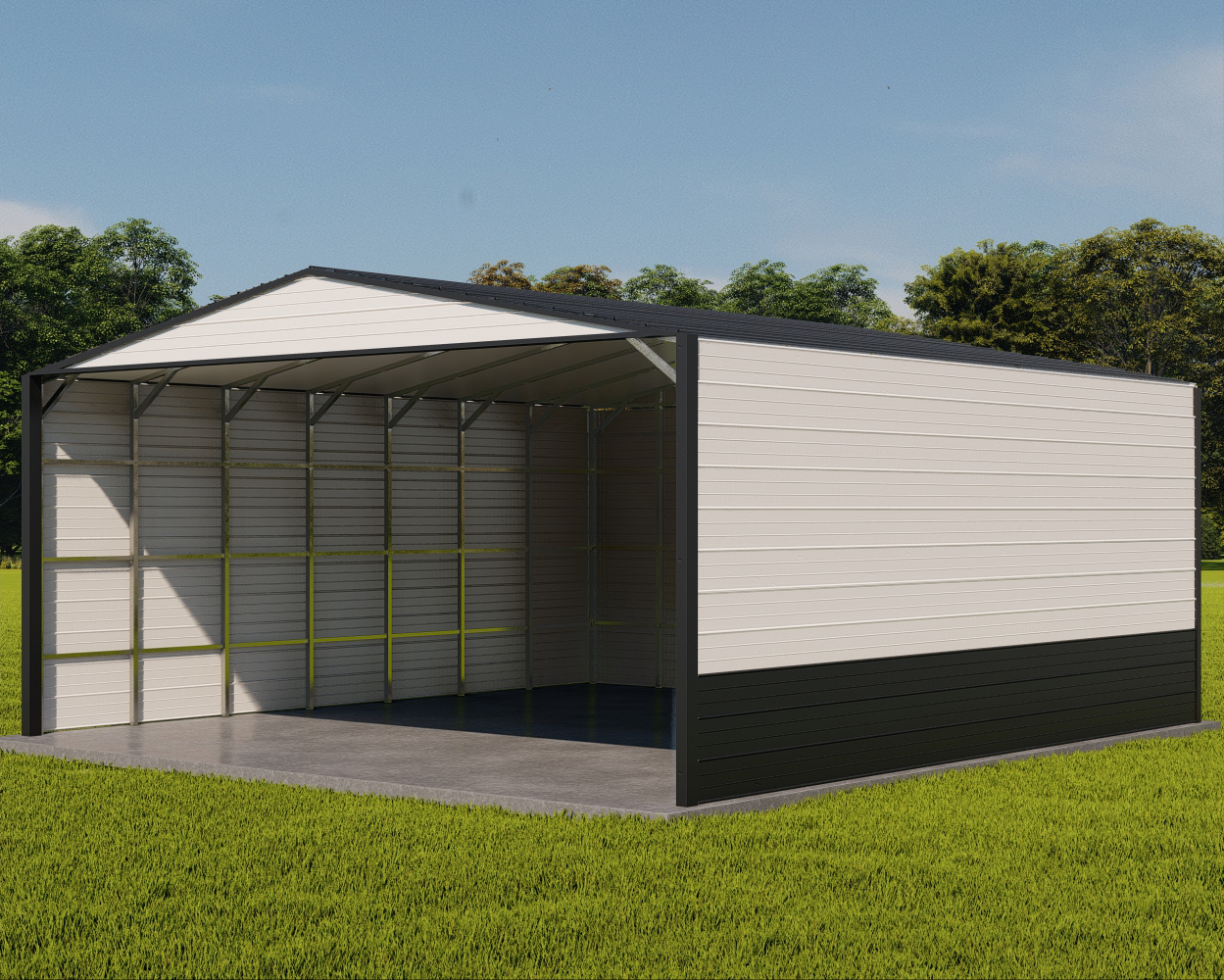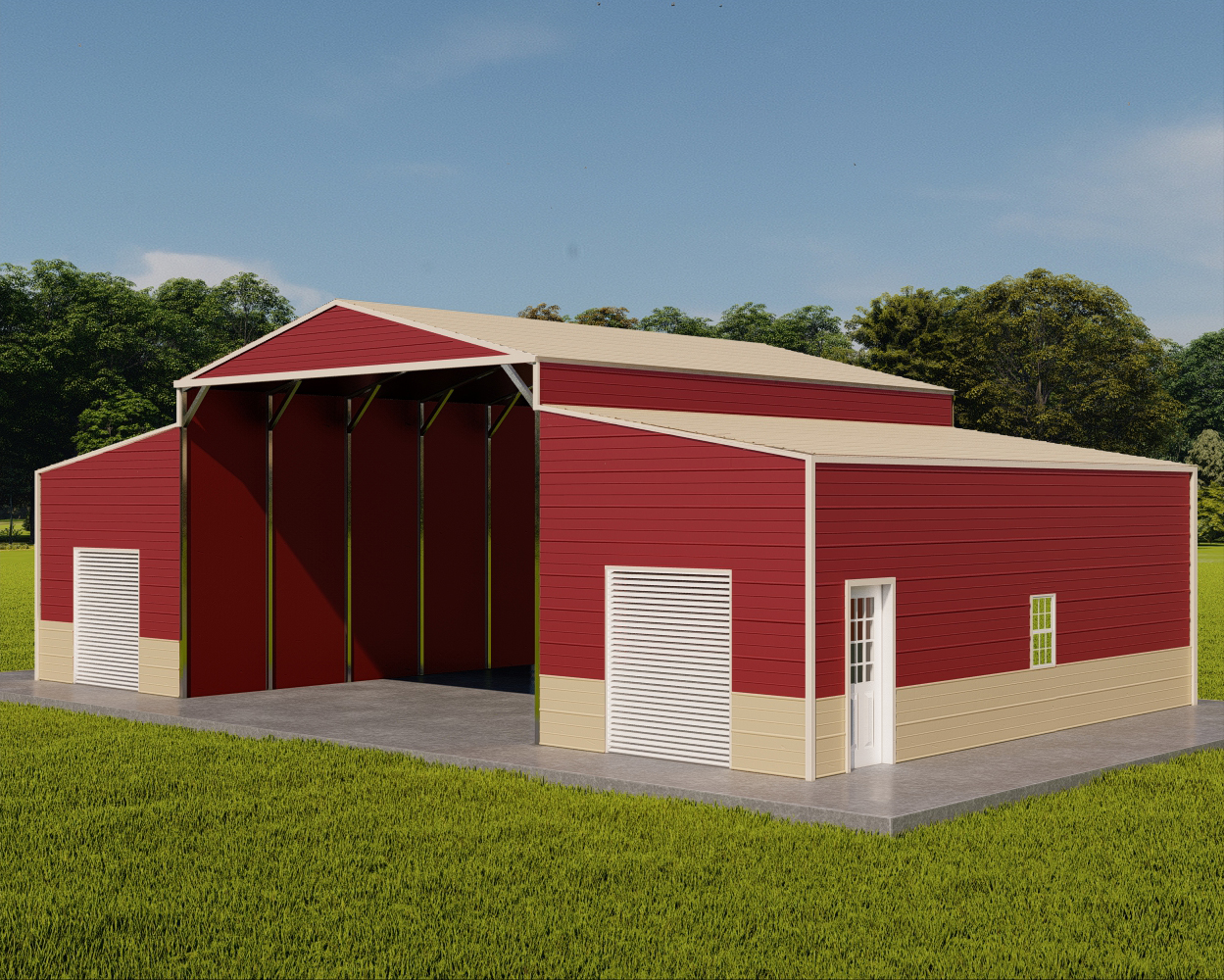
The Importance of Carport Anchoring: Ensuring Stability & Longevity
When installing a metal carport, ensuring
stability and longevity starts with proper anchoring. Whether you live in an
area with high winds or calm weather, anchoring a carport correctly is crucial
for its durability. This blog will cover how to anchor a carport, the types of
anchors available, and why following local building codes is essential.
Understanding Carport Anchoring Basics
Carport anchoring refers to the process
of securing your metal carport to the ground.
Anchors provide
stability against external forces like wind, rain, and even snow.
Without
proper anchoring, your carport could shift, causing structural damage or even
collapse in extreme cases.
Why Anchoring Is Crucial
- Protects against high winds: A securely
anchored carport can withstand strong gusts, keeping your vehicles safe.
- Prevents shifting: Over time, weather and ground movement can cause a carport to move if
it’s not properly secured.
- Extends lifespan: Proper anchoring ensures your carport remains stable and lasts for
years to come.
Types of Carport Anchors
When it comes to how to anchor a carport,
there are several options available, depending on the foundation and location.
-
1. Rebar Anchors for Carport
Rebar
anchors are cost-effective and often used for temporary setups or in areas with
relatively calm weather conditions. These are driven deep into the ground
through the carport’s base rail to provide stability.
-
2. Concrete Wedge Anchors
When setting your carport on a poured
concrete foundation, concrete wedge anchors are the best choice. These anchors
are inserted into drilled holes in the concrete slab and then expanded to
create a firm grip.
-
3. Mobile Home Anchors
Also
known as auger anchors, these are similar to those used for mobile homes. They
are screwed into the ground and are ideal for securing a carport in areas prone
to strong winds. They work well for both asphalt anchors and soft ground
setups.
-
4. Asphalt Anchors
For
carports installed on asphalt, special anchors are designed to penetrate and
secure to the softer material. Anchoring a carport on asphalt requires anchors
designed for asphalt foundations to ensure long-term stability.
Anchoring to Different Surfaces
Depending
on where you plan to install your carport, you may need to use different types
of anchors.
-
1. Concrete Foundations
A carport installed on poured concrete
carport footing or a concrete slab requires concrete wedge anchors. These
provide a firm connection between the carport’s base rail and the ground.
-
2. Gravel
When setting a carport on gravel, you can
use rebar anchors or auger anchors to set a gravel foundation securely. These
anchors are driven into the ground and work well for loose, uneven surfaces.
-
3. Dirt and Grass
In areas where you are anchoring directly
into the soil, auger anchors or rebar anchors work best. The anchors are
drilled or driven deep into the ground to provide stability, even in soft soil.

Steps for Anchoring Your Carport
Knowing how to secure a carport to the ground is essential for any installation. Here’s
a basic step-by-step guide:
-
1. Check Local Building Codes Before starting, make sure to pull
a permit if required. Local building codes may specify the type of anchors to
use, especially in areas prone to high winds.
-
2. Prepare the Site Level the ground or foundation where the carport will sit. For concrete
slabs, ensure the surface is clean and ready for drilling.
-
3. Install the Anchors Depending on your foundation type,
use the appropriate anchors:
-
For concrete footings, drill into
the slab and insert concrete wedge anchors.
-
For gravel or dirt, drive in rebar
anchors or screw in auger anchors.
-
For asphalt, use asphalt anchors
designed specifically for that surface.
-
4. Secure the Base Rail Once your anchors are in place, attach the carport’s base rail to the
anchors, tightening all bolts and ensuring everything is secure.
Long-Term Stability: Maintenance Tips
To ensure your carport’s stability and
longevity, regular maintenance is key.
-
Inspect Anchors Annually: Check for any signs
of movement or wear, especially after storms or high winds.
-
Re-tighten Bolts: Over time, bolts may loosen,
so make sure to periodically check and tighten them.
-
Check for Ground Shifting: If you notice any
sinking or shifting, you may need to re-anchor or adjust the carport’s
position.
Cost-Effective Solutions
Anchoring
a carport is an investment, but it doesn’t have to break the bank. Using rebar
anchors or mobile home anchors can be a cost-effective way to secure your
carport, especially in areas with moderate weather conditions.
For
more permanent setups, investing in concrete footings or concrete wedge anchors
will provide peace of mind, especially if you live in an area prone to high
winds. These solutions might require a higher upfront cost but are worth it in
the long run.
The Bottom Line: Anchoring Your Carport for the Long Haul
Ensuring
your carport is properly anchored is essential for both its stability and
longevity. Whether you’re using rebar anchors, concrete wedge anchors, or
mobile home anchors, following the right installation methods and local
building codes will keep your carport secure for years to come. With the right
foundation and anchors, your metal carport will protect your vehicles and
withstand the elements without fail.

